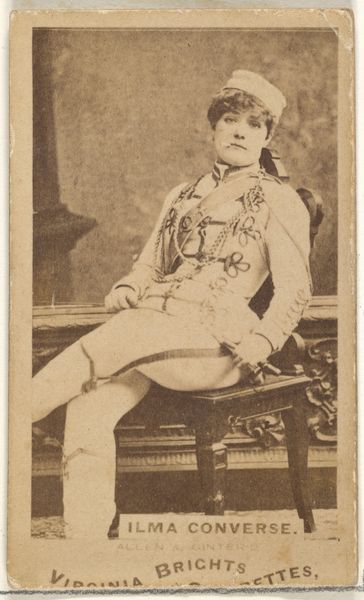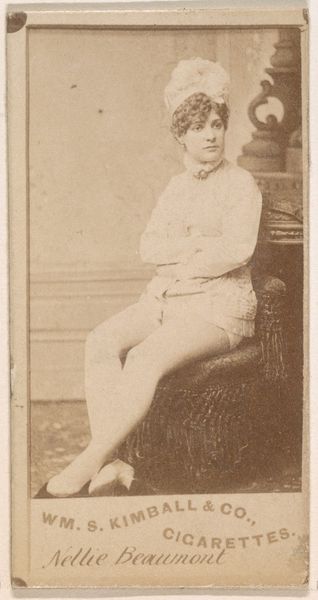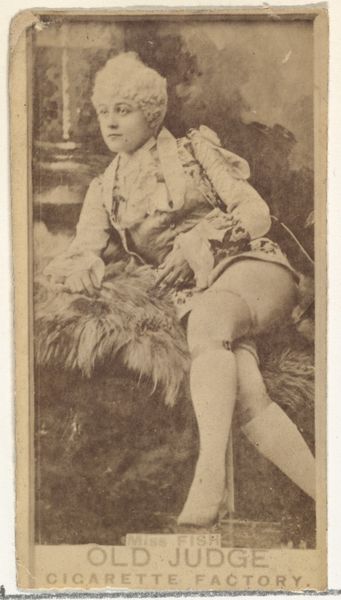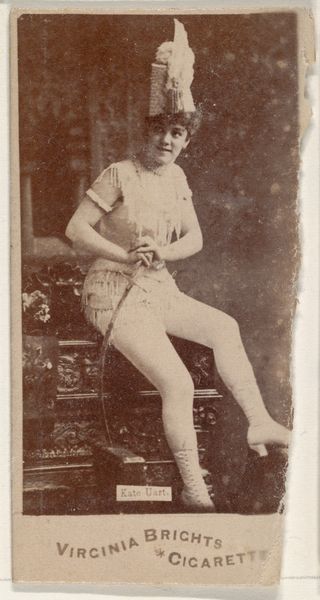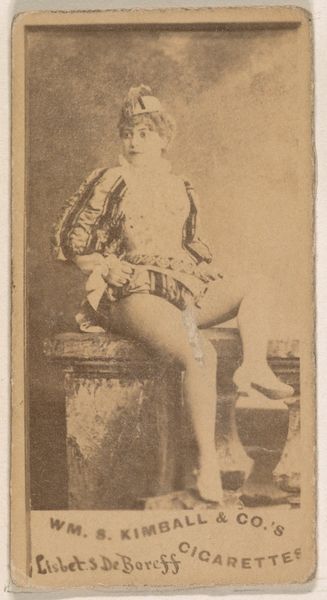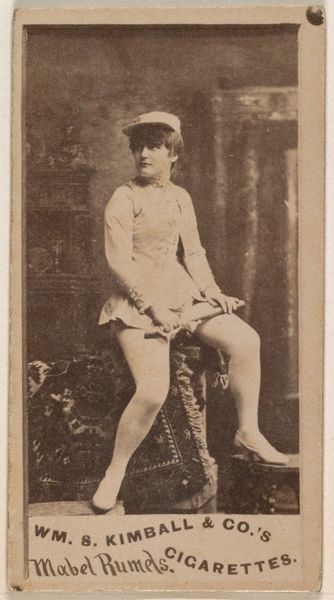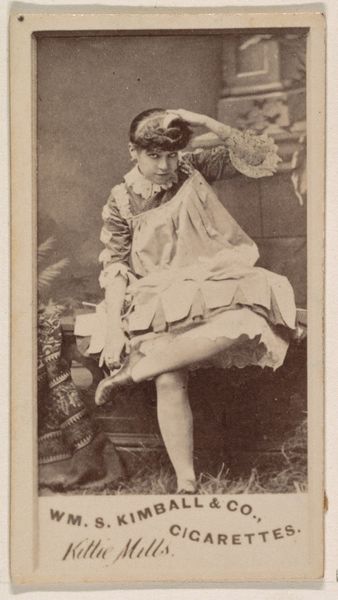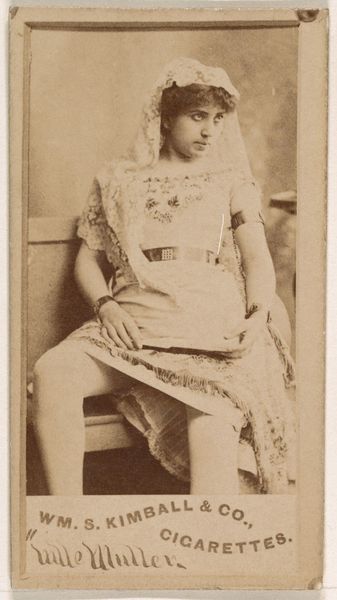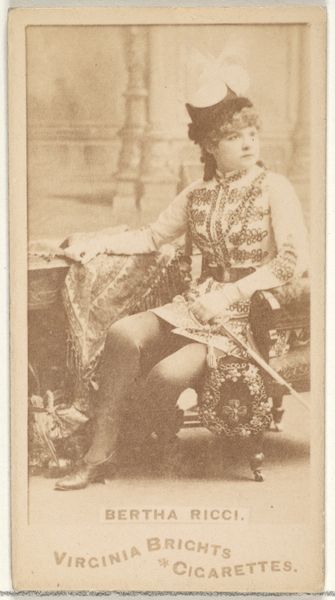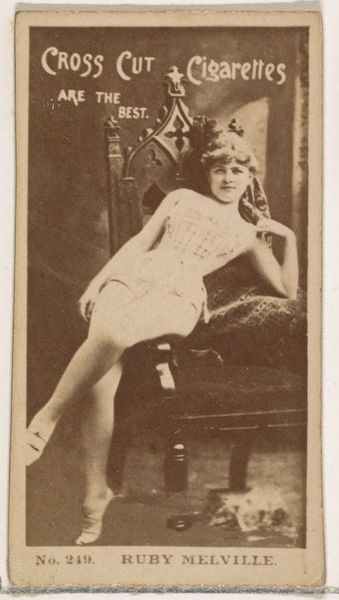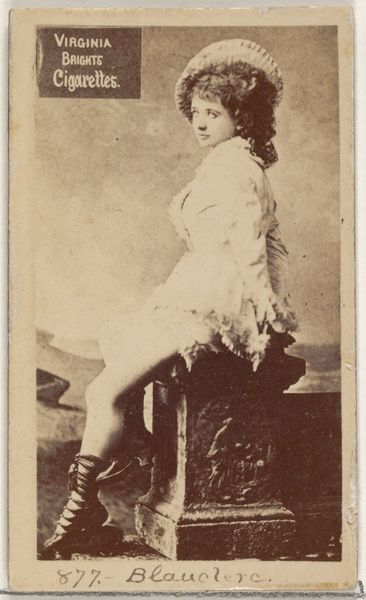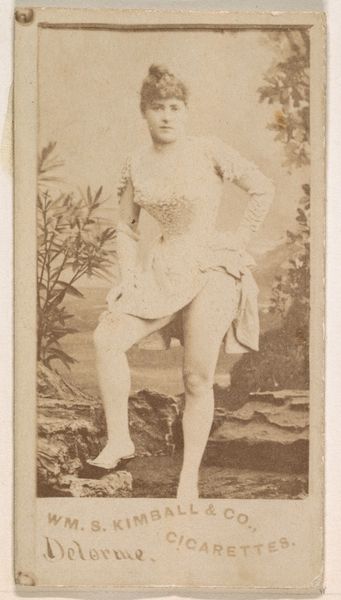
Card 746, Mabel Runnels, from the Actors and Actresses series (N45, Type 2) for Virginia Brights Cigarettes 1885 - 1891
0:00
0:00
print, photography
#
portrait
# print
#
photography
#
19th century
Dimensions: Sheet: 2 3/4 x 1 3/8 in. (7 x 3.5 cm)
Copyright: Public Domain
Curator: Ah, this diminutive cabinet card. It's Card 746 from Allen & Ginter’s “Actors and Actresses” series, featuring Mabel Runnels. Dating roughly from 1885 to 1891, and originally part of a Virginia Brights Cigarettes promotional set, its primary medium is photography reproduced via print. Editor: It's striking how posed and artificial it feels, yet there’s also a vulnerable quality to Runnels' gaze, considering how popular these were as ephemeral advertisements. Curator: The composition intrigues me. Runnels, seated on an ornate ottoman before what looks like a draped backdrop, exhibits a carefully calibrated pose. Note the repetition of vertical lines throughout. These rigid lines combined with the soft, almost melancholic tone contributes to a restrained but suggestive interplay between form and representation. Editor: I am compelled to think about these cards as they were mass produced in tobacco factories during a surge in industrial expansion. The labor involved in printing and distributing these commodities makes one contemplate the exploitation inherent in advertising at the height of the Gilded Age. Further, the photographic process and materials themselves offer important commentary of the way we consume portraiture as an object of popular culture. Curator: Yes, it is equally an object made for profit. Even the brand insignia becomes an integral compositional element in that upper corner, which contributes a narrative to both the individual’s reputation and a particular brand, as you stated. The semiotic function of such detail is not just as adornment. Editor: How many factory workers' hands, immigrant mostly, handled the printing? Where was Mabel Runnels, and what role did she play in it all? It’s easy to become seduced by the aesthetic but hard to see the complete socioeconomic landscape. Curator: Very insightful. Thinking about such points helps contextualize our understanding about Japonisme’s impact during the 19th Century, and provides critical commentary of photographic portraiture during that time. Thank you for your insights. Editor: Indeed, viewing it through a historical lens invites us to reflect more profoundly on these delicate artifacts.
Comments
No comments
Be the first to comment and join the conversation on the ultimate creative platform.
